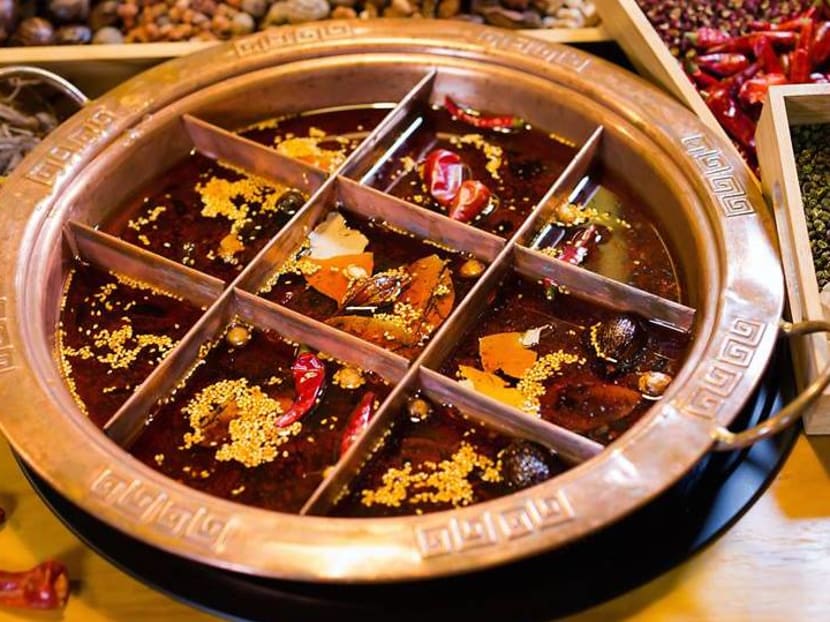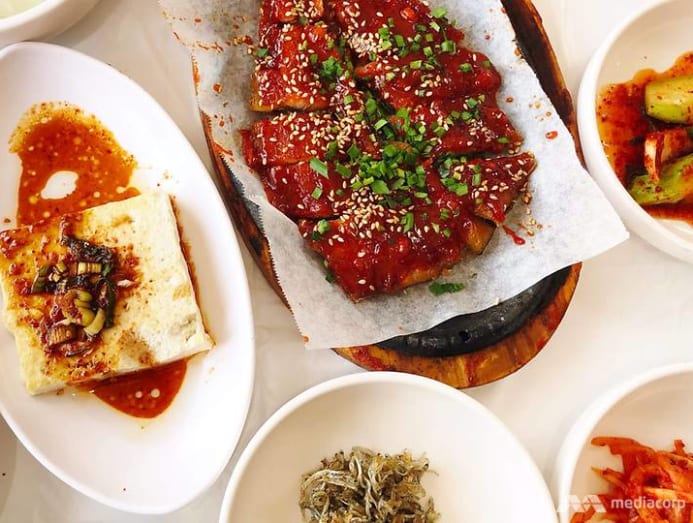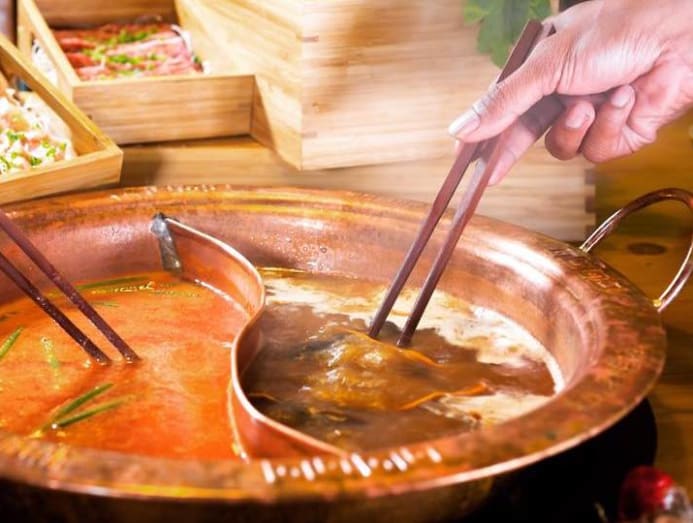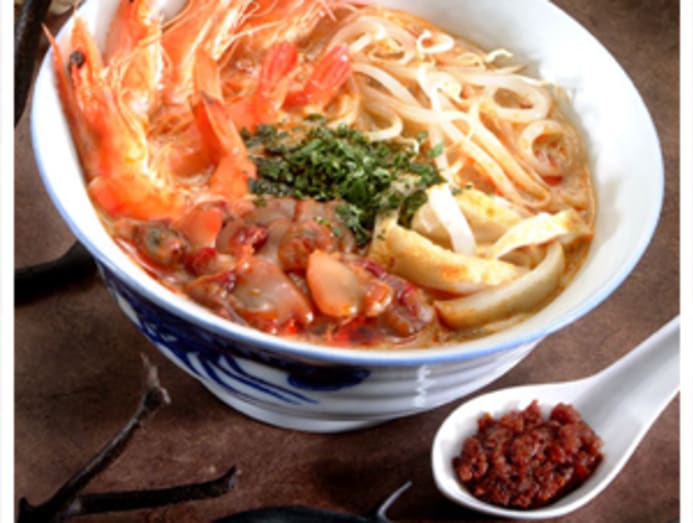Is the heat getting to you? Eating spicy food cools you down better than ice cream
It sounds counter-intuitive, but you can actually beat the heat with chilli and spice. CNA Lifestyle breaks down the reasons why you should go ahead and order that mala hotpot.

(Photo: Facebook/LongQing.sg)
Is the blistering heat getting you all hot and bothered? Order up some fiery buldak (spicy Korean chicken), hunt down the spiciest chilli crab you can find, or tick the volcano-hot option on the mala hotpot order chit.
No, our brains haven’t been fried by the sun. As counter-intuitive as it sounds, bringing the heat to your mouth is actually a way to cool down.
A MORE LASTING COOL-DOWN
You may be inclined to reach for a cold can of cola, or a tall iced coffee or beer when the mercury rises, but the cooling effect isn't lasting.
Here's why: The human body has a built-in thermostat in the brain called the hypothalamus. It strictly maintains your core temperature at 36.5 degrees Celsius, give or take a degree.
Even when you're in the Sahara Desert or Antarctica, your core temperature simply rises or dips by a mere two to three degrees, said Associate Professor Nigel Taylor from the University of Wollongong's Thermal Physiology Department.

When you drink an ice-cold beverage or eat ice cream, the hypothalamus senses a drastic drop in your internal temperature. And because its job is to maintain things at 36.5 degrees Celsius, it cranks up your body temperature, causing you to feel warmer.
Eating spicy food does the opposite. Receptors in your mouth interprets the capsaicin component in chilli as a chemical action that creates a "hot" burning sensation, said Dr Reuben Wong, a gastroenterologist with Gleneagles Hospital.
And it is this sensation that causes the hypothalamus to counter the perceived temperature rise by increasing blood circulation and making the body sweat.
Scientists call this gustatory sweating, which you'll be familiar with as those beads of perspiration that appear on the forehead, face, scalp, and neck soon after that first serving of sambal belacan.
WHY SUBMIT TO THE BURN?
Other than to feel the burn in the mouth, to make the eyes water, and to work up a sweat, are there other reasons to love chilli? Studies here and here showed that capsaicin may confer some protection from stroke, and cholesterol accumulation that can lead to cardiovascular diseases.

In fact, a study in the British Medical Journal found that those who ate spicy food six to seven times a week showed a 14 per cent risk reduction in total mortality, compared to those who ate spicy food less than once a week. Eating more spicy food was associated with lower risks of cancer, heart diseases and respiratory disease.
INCREASING YOUR TOLERANCE FOR SPICY FOOD
As for building your tolerance towards capsaicin's burn, you can actually do that. According to experts, capsaicin depletes the sensory function of the neurotransmitter substance P, which transmits pain signals to the brain. So, the more spicy food you eat, the less heat you'll detect and the greater your tolerance for chilli-laden dishes.

The same may be said of the "ring of fire" some might experience in the toilet after a spicy meal.
"The same receptors that are found in the mouth are also found along the rest of the gastrointestinal tract," said Dr Wong. "So, the same burning sensation in the anus is caused by its action on the same receptors. Ditto for the rest of the gut, where it can trigger abdominal pain and provoke diarrhoea."
But if capsaicin's heat is too much to take, temper it with water or dairy products like milk or yoghurt, said Dr Wong.





